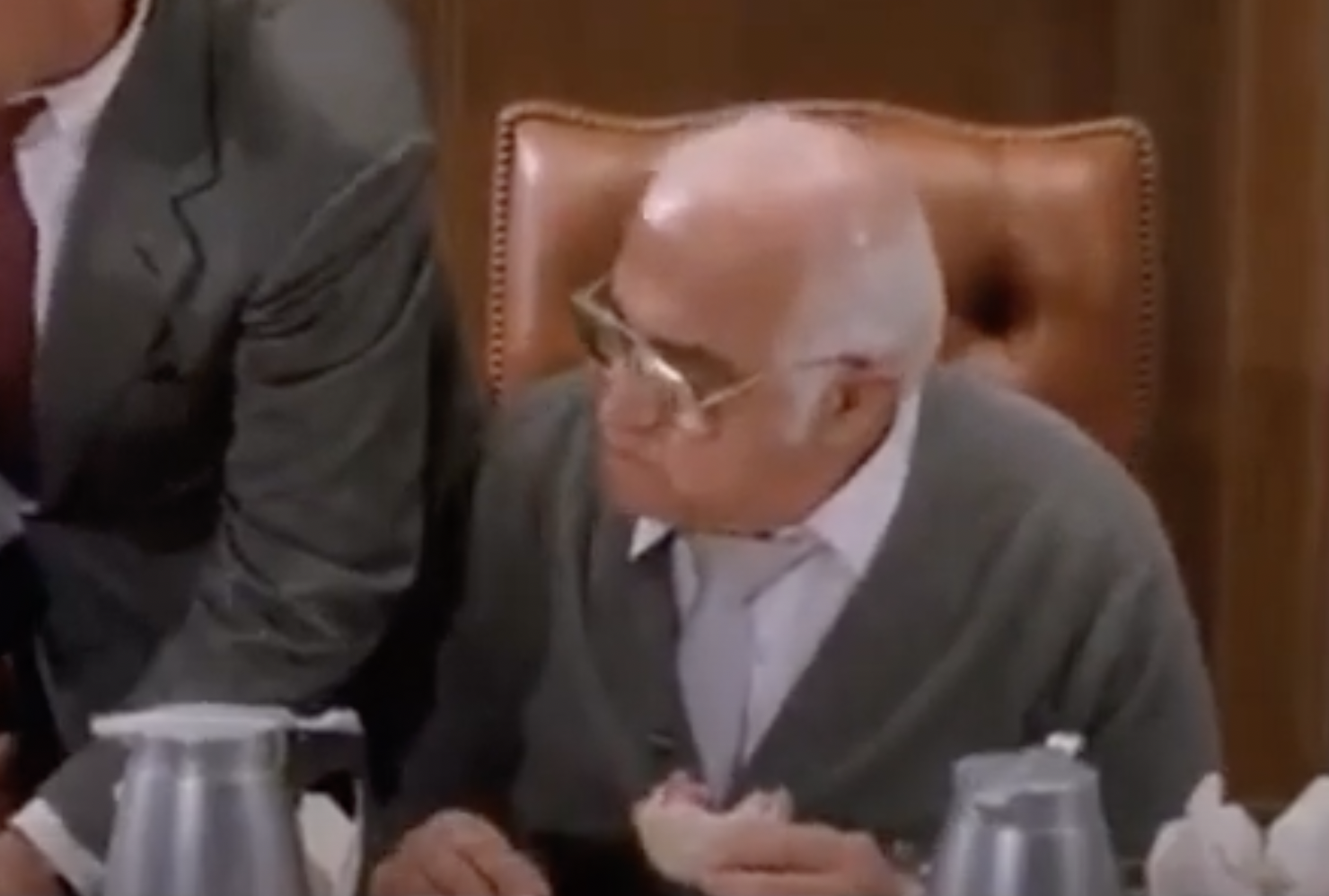As has been mentioned countless times on our 300+ episodes of the Interdimensional Crossrip podcast, when you watch a film that is so rich with detail enough, you notice something new almost every time. And so, after viewing five-million three hundred and one of Ghostbusters II, I’d like to present to you the unsung hero in the corner of the frame who now cracks me up every single time that I see him…
Ladies and gentlemen: Pastrami Sandwich Guy.
Pastrami Sandwich Guy commands about a minute worth of screen time. And he chews both his sandwich and the scenery through the entirety. From first frame of celluloid to last, it literally doesn’t matter to this man that the world is coming to a cataclysmic end and chaos reigns around him — he’s finishing his deli, dammit.
With what looks like a delicious pastrami on rye in hand, Pastrami Sandwich Guy epitomizes New York. He does such a great Marx Brothers-like job of listening and watching the action unfolding around him, but the entire time won’t put down his sandwich and certainly won’t cease his slow and methodic mastication. Ben Stein informs us there’s a shell around the museum they can’t dent (holding a photo of Libby’s pedestal)? Pastrami Sandwich Guy observes but continues eating. Hardemeyer is thrown out of the conference room? Pastrami Sandwich Guy tracks him out the door then returns back to lunch. It’s hilarious.
And the best part, as the entire office gathers at the window to watch the sky grown dark with an eclipse and a vortex seemingly swallow the sky whole, who is absent? You guessed it, Pastrami Sandwich Guy can’t be bothered.
Just a brilliant unsung performance by someone probably just making a scale day rate. So who was this mysterious sandwich loving man? I’ve begun my quest to find out.
Best I’ve been able to figure, Pastrami Sandwich Guy got his time under the lights on Thursday, April 27, 1989. The INT. CONFERENCE ROOM scenes were pick ups toward the very end of production on The Burbank Studios lot. For reference, principal photography of Ghostbusters II had wrapped on Wednesday, April 5th. But about a week of pick-ups occurred later in the month, mainly to finish out the final showdown with Vigo.
As we’ve learned over the years, a cameo featuring Eugene Levy as Louis’ cousin Sherman was cut from the film at zero hour, and with it a huge plot hole of Louis asking his cousin to release the Ghostbusters. Not only that, but Hardemeyer receiving his comeuppance by being sucked into the slime wall around the museum had also been cut. This brilliantly rescripted scene smooths out the absence of both plot points, putting the onus on Mayor Lenny to need the Ghostbusters released and also having Hardemeyer thrown out all in one swoop.
Traditionally, only those with speaking or featured roles in the film receive end credits, so it’s tough to figure out who played our sandwich-eating hero. I did some digging into the GBHQ production archives and also came up pretty empty.
While David Margulies (“Mayor of NY”) and Kurt Fuller (“Hardemeyer”) are typed onto the call sheet, several of the actors in the scene are written in as last-minute additions. Ben Stein is written on the call sheet as “Public Works Official” as is Erik Holland and Philip Baker Hall both as Fire and Police Commissioners. My only guess here is that, because these were pick-up days, the cast of players outside of Lenny and Hardemeyer were in constant flux. Most likely, Ivan Reitman had to call in a handful of favors to his friends to come play that Thursday.
Why do I think that’s the case? The first thing filmed that Thursday was a pick-up shot with a dock supervisor witnessing the arrival of the Titanic, played by long-time Ivan Reitman friend and would-be Stripes star Cheech Marin. Who is also written by hand onto the call sheet.
So the best I can figure is that Pastrami Sandwich Guy was a family friend of Ivan’s, background player from Central Casting, or was someone close to the production who stepped in to fill out the scene. Outside of someone out there identifying him, or getting my hands on a Day Out of Days or other production materials that may have shown who this wonderful man was on the day, it will remain a mystery. But whether we know his real name or not, the man is brilliant and deserves a curtain call.
Anyone out there know who he might be? In the meantime, check out the clip below to enjoy Pastrami Sandwich Guy - long may he enjoy lunch.
